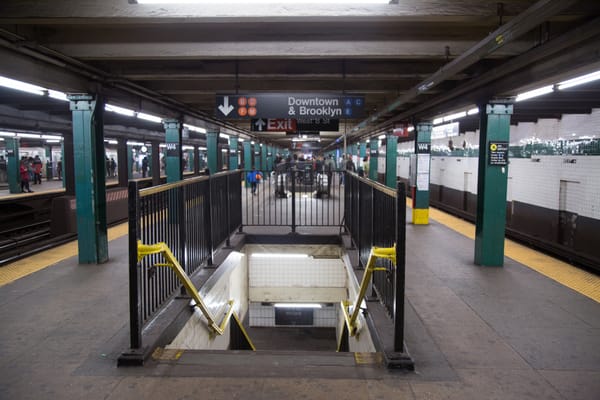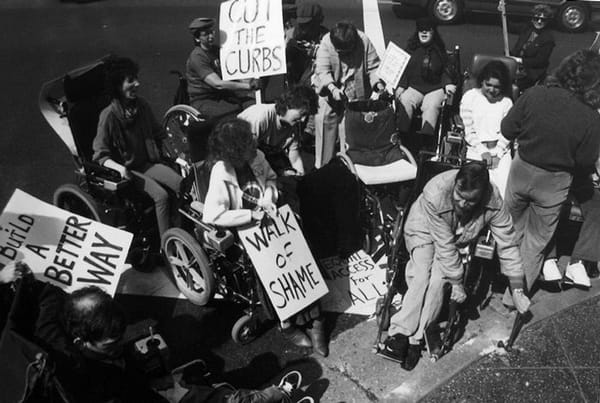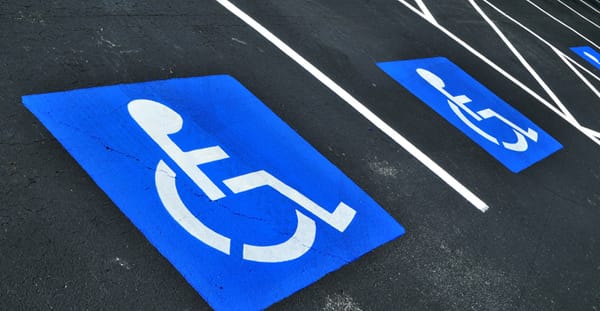7/20/25: Density, Sprawl, and Oakland's Sidewalks
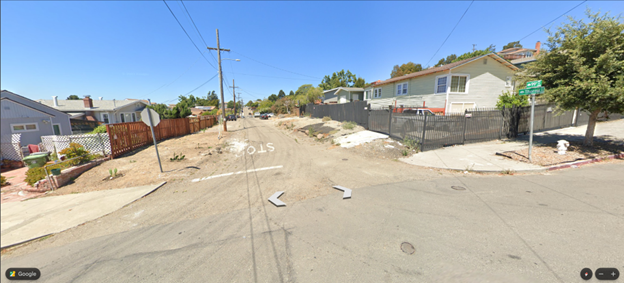
On July 17, the city of Oakland announced a settlement agreement to drastically improve the accessibility of pedestrian rights-of-way across the city over the next 25 years. The settlement is the result of a class-action lawsuit filed by Disability Rights Advocates and 3 other firms on behalf of Michael Curran, Nicole “Nikki” Brown-Booker, and “all others similarly situated.” As a result, the city has committed to installing and repairing 11,000 curb cuts and addressing 78,000 broken and missing sidewalks identified by the community. The settlement should drastically improve the mobility and independence of PWDs in Oak-Town, even though it’ll be a gradual process lasting decades.
Curran and Brown-Booker’s lawsuit alleges pervasive failures in the construction, maintenance, and regulation of pedestrian rights-of-way leading to “a. Missing, unsafe and/or inaccessible curb ramps that do not comply with federal and/or state access standards (e.g., slopes too steep, hazardous cross-slopes, curb ramp lips); b. Pedestrian rights of way that are cracked, crumbled, steep, sunken, or uneven or that have excessive slopes or broken and inaccessible surfaces; and, c. Physical obstacles on the sidewalk between intersections, such as improperly placed signs, poles, trash receptacles, utility boxes, and bus stop benches.” The plaintiffs called for declaratory and injunctive relief for violations of Title II of the Americans with Disabilities Act of 1990, Section 504 of the Rehabilitation Act of 1973, and California Government Code § 11135 (nondiscrimination in programs and infrastructure funded in whole or in part by the State).
The condition of Oakland’s rights-of-way have led to direct harm to people with disabilities. From the lawsuit:
The inaccessibility of the City’s pedestrian right of way results in Plaintiffs and the members of the putative class being denied full and equal access to places of public accommodation, places of employment, and other places to which the general public is invited. Further, the inaccessibility of the City’s pedestrian right of way contributes to the isolation and segregation of persons with mobility disabilities by making it impossible or more difficult for them to visit or socialize with family members and friends. Moreover, as a result of Defendant’s discriminatory conduct as alleged herein, Plaintiffs and the members of the putative class are forced to struggle with access barriers in the City’s pedestrian rights of way on a daily basis, resulting in fatigue, physical injury, emotional distress, and/or damage to wheelchairs and other mobility devices.
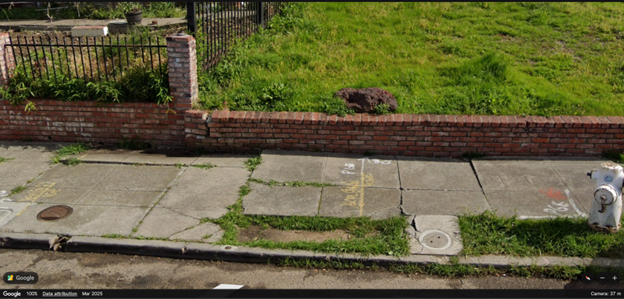
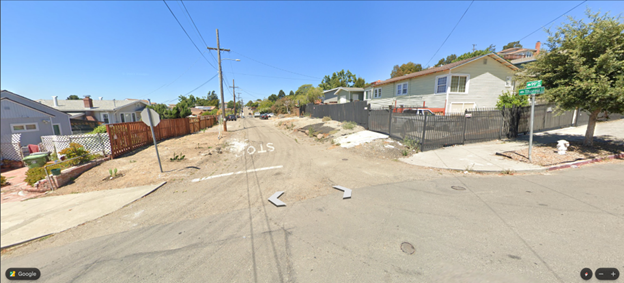
Now, the city holds major responsibility for missing and poorly designed curb cuts, physical obstructions, and missing sidewalks. One of the big problems with sidewalk accessibility, though, comes from who actually owns the sidewalk. For the most part, sidewalks are included as part of a given property; urban properties stretch from the curb to the back lot line, which includes sidewalks out front. And the square concrete sections in those sidewalks are constantly breaking up. In Oakland – just like in every other American city – the roots of street trees that have been growing for decades are pushing up against the underside of sidewalks. The roots raise adjacent sidewalk squares, leading to uneven pathways and creating thresholds that are sometimes the height of curbs. In other parts of the city – especially deep East Oakland, the Oakland hills, and former industrial areas – there simply aren’t any sidewalks. People with mobility equipment navigating those neighborhoods may be forced into the street (which itself may be littered with cracks and potholes) and face dangers from cars and trucks.
So, what’s the remedy? Cities sometimes engage property owners with egregiously uneven sidewalks and demand they repair the right-of-way. Property owners that get notice might then be liable if, say, a wheelchair-user crashes on that sidewalk. But not everybody has money to repair an adjacent sidewalk, especially in lower-income parts of town (which usually have below-average sidewalk quality). Recognizing this, Oakland has helped low-income property owners through the Sidewalk Assistance Program, which the City Council recently expanded – something that will be needed to meet the settlement agreement. And the city has committed to improving its Buy-Sell-Repair program, which requires that property owners repair adjacent sidewalks before the property changes hands.
Sprawl Kills Sidewalk Accessibility; Density Helps It
The impact of each marginal dollar on sidewalk repairs is directly influenced by Oakland’s land use. For that reason, I think the settlement can and should be viewed through an urbanist lens – especially regarding urban density and efficient use of infrastructure dollars. One of my favorite videos on urbanism is “Suburbia is Subsidized: Here’s the Math” by Not Just Bikes. The video covers tax-and-expense analysis for different land uses in American cities. It shows that dense, walkable neighborhoods are almost universally revenue-positive, while car-centric sprawl is a drain on city budgets. Not Just Bikes highlights the different types of infrastructure needed to support each parcel – sewers, water, power, gas, asphalt roadways, sidewalks, etc. – and notes that dense urban development provides higher tax revenue well beyond any increased infrastructure costs. And car-centric sprawl usually requires much more asphalt and related maintenance. As a result, dense neighborhoods are revenue-positive while less-dense ones are subsidized (a dynamic bankrupting many American cities since the vast majority of our land is single-families owned). Long story short: density good, sprawl bad.
And that gets me back to Oakland sidewalks. In Oakland, roughly 67% of the residential land and 27% of all land has historically been zoned for detached single-family homes. Although Oakland eliminated single-family zoning in fall 2023 – instead allowing anywhere from duplexes to fourplexes, depending on lot size – those neighborhoods won’t see a significant increase in density anytime soon, since neighborhood redevelopment is a gradual process. In the meantime, they require subsidies from denser neighborhoods in a city with an already massive budget deficit. Many of Oakland’s single-family zoned neighborhoods are also the worst offenders in terms of sidewalk inaccessibility. So, the city and its residents will be spending a lot of money repairing sidewalks with just one family per 50 horizontal feet or so – a tremendously inefficient use of funds compared to downtown or apartment-lined commercial corridors. And sidewalk repairs citywide will be subsidized by denser neighborhoods, especially downtown Oakland.
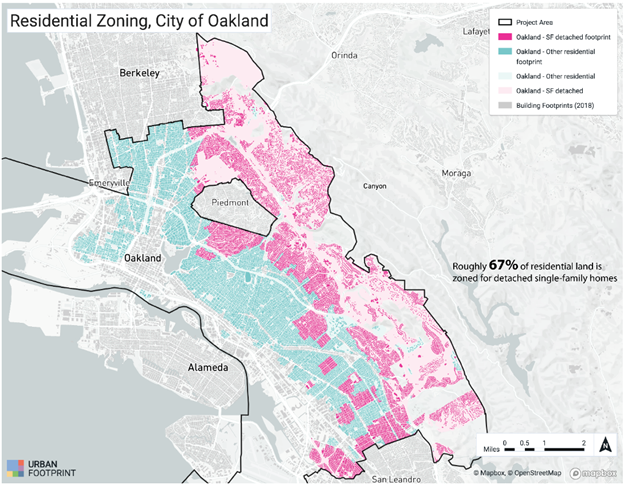
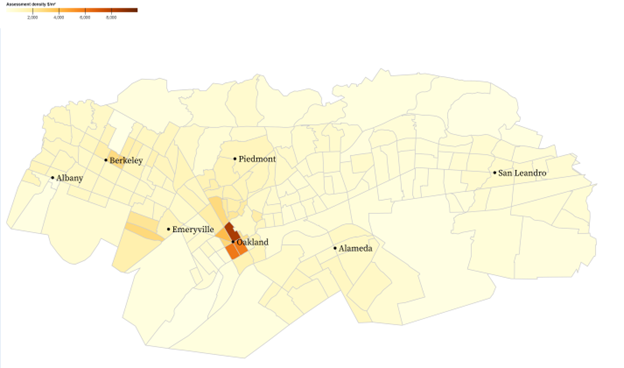
If all of Oakland had the density of downtown or Jack London Square – and if it hadn’t sprawled up into the hills over the decades – then tax dollars would go farther and the entire repair effort wouldn’t take 25 years. But since we are stuck with the status quo, Oakland can at least prioritize dense development in the flats. It’ll help get the fiscal house in order and improve accessibility at the same time.
You can contribute to better sidewalks (just not in Oakland… Yet)
In writing this piece, I came across Project Sidewalk, which is a crowd sourced mapping effort to identify accessibility issues with sidewalks in select cities. Any old user – which could be you! – can start identifying sidewalk issues, including uneven or missing sidewalks, missing or poorly-designed curb cuts, and crosswalks with bad or no markings or broken asphalt. And Project Sidewalk is feeding that information into a machine learning (“AI”) model to help identify sidewalk issues automatically through Google Street View images.
Project Sidewalk is currently live in 19 cities in the US, plus three in Mexico, one in India and one in the Netherlands. Oakland isn’t included yet – and IMO it doesn't need to be an urgent target since so many broken sidewalk sections have already been identified. Either way, you can support the project and accessibility in 24 cities by becoming a Project Sidewalk contributor. Check it out if you get the chance.
In Other News:
Hospitals and clinics often vanish after climate disasters, study finds - The Daily Climate
How accessible are the NCC's trails, really? Now there's an app for that | CBC News
How 2 men helped a camp for kids with disabilities rebuild amid deadly Texas floods - ABC News
Transgender women with disabilities found to have higher mental health risks – Medical Xpress
Supporting Older Adults With Intellectual Disabilities: A Growing Imperative For Leaders – Forbes
Labor Department Moves to End Disability Hiring Goal for Federal Contractors – Mother Jones
Disability advocates concerned about destruction of WA state records - The Columbian
Making Rocky Mountain National Park more accessible for visitors with disabilities – phys org
Bend land use experiment finally results in lower-cost homes | The Bulletin
Metro Council Passes 'Smart Stair' Housing Reform to Address Affordability Crisis – WZTV Nashville
Housing infrastructure law expected to spur $2B in new development – WCAX Vermont
Drought in the American Southwest could persist through 2100, scientists warn - The Daily Climate
Why the federal government is making climate data disappear | Grist
House releases Interior-EPA spending bill with deep cuts - E&E News by POLITICO


